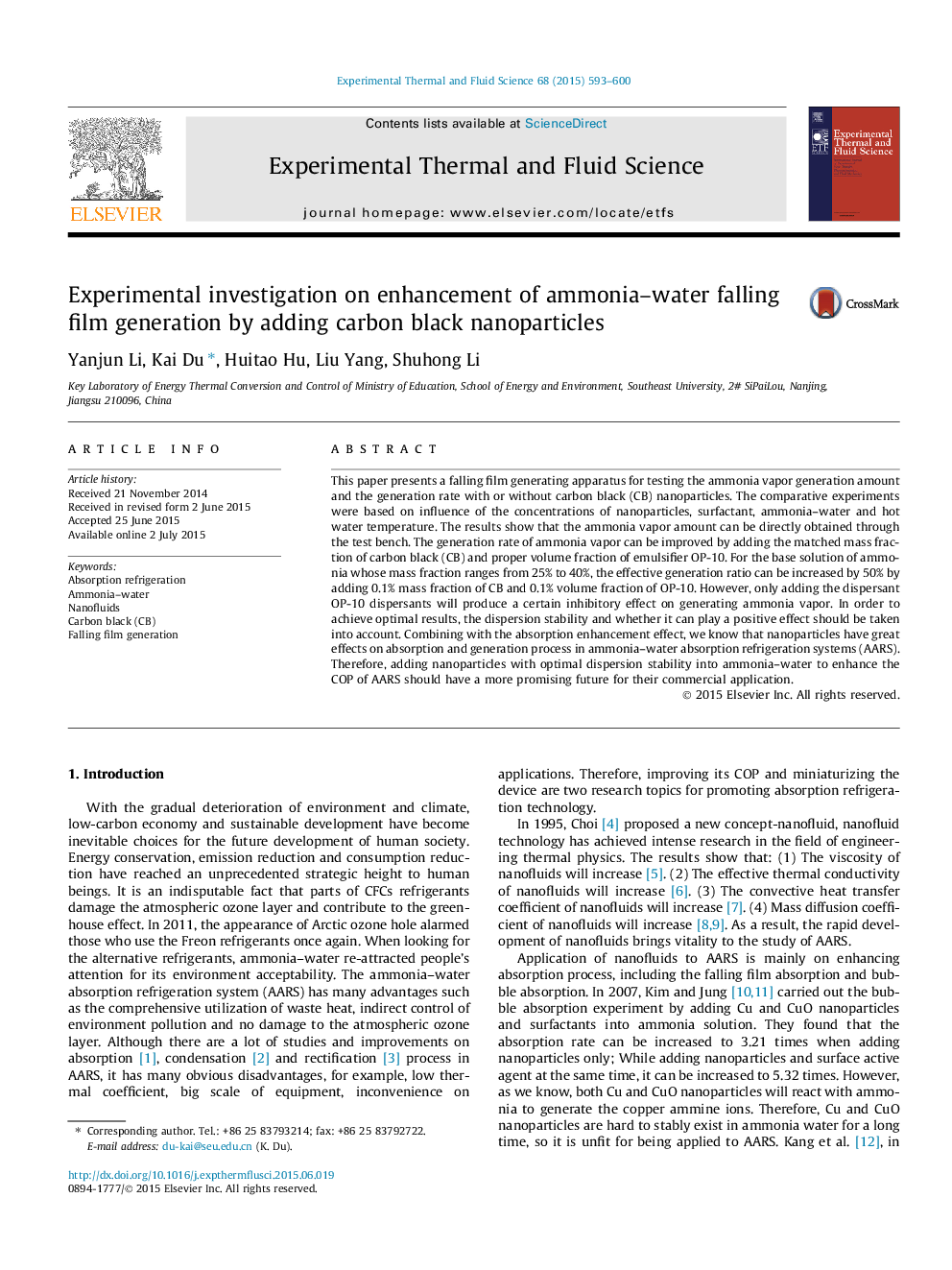| Article ID | Journal | Published Year | Pages | File Type |
|---|---|---|---|---|
| 7052229 | Experimental Thermal and Fluid Science | 2015 | 8 Pages |
Abstract
This paper presents a falling film generating apparatus for testing the ammonia vapor generation amount and the generation rate with or without carbon black (CB) nanoparticles. The comparative experiments were based on influence of the concentrations of nanoparticles, surfactant, ammonia-water and hot water temperature. The results show that the ammonia vapor amount can be directly obtained through the test bench. The generation rate of ammonia vapor can be improved by adding the matched mass fraction of carbon black (CB) and proper volume fraction of emulsifier OP-10. For the base solution of ammonia whose mass fraction ranges from 25% to 40%, the effective generation ratio can be increased by 50% by adding 0.1% mass fraction of CB and 0.1% volume fraction of OP-10. However, only adding the dispersant OP-10 dispersants will produce a certain inhibitory effect on generating ammonia vapor. In order to achieve optimal results, the dispersion stability and whether it can play a positive effect should be taken into account. Combining with the absorption enhancement effect, we know that nanoparticles have great effects on absorption and generation process in ammonia-water absorption refrigeration systems (AARS). Therefore, adding nanoparticles with optimal dispersion stability into ammonia-water to enhance the COP of AARS should have a more promising future for their commercial application.
Related Topics
Physical Sciences and Engineering
Chemical Engineering
Fluid Flow and Transfer Processes
Authors
Yanjun Li, Kai Du, Huitao Hu, Liu Yang, Shuhong Li,
